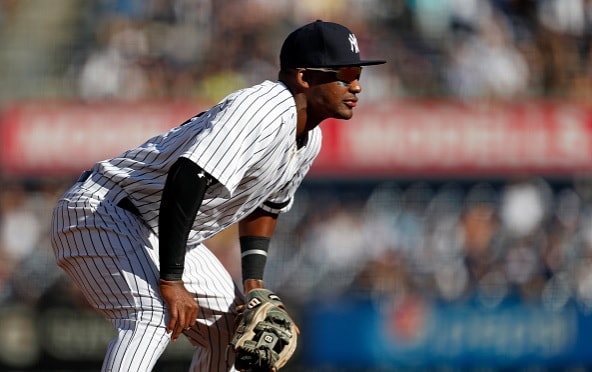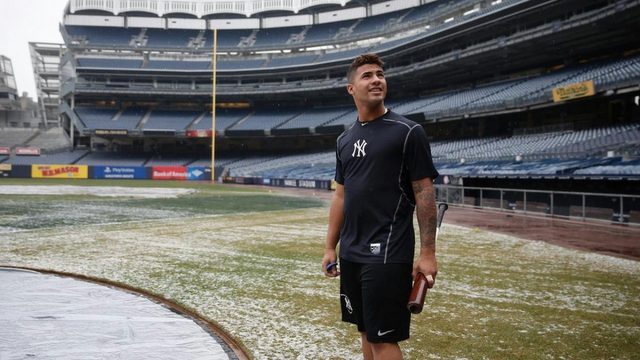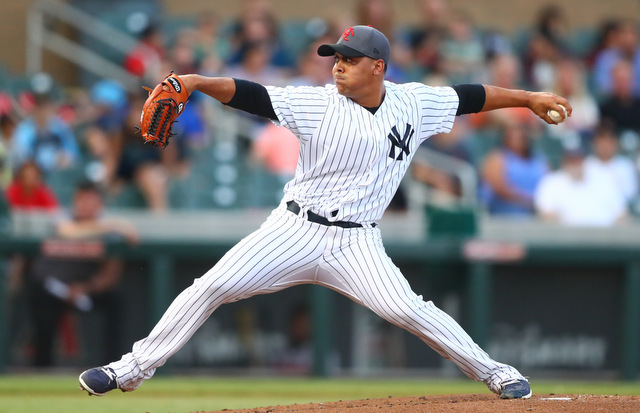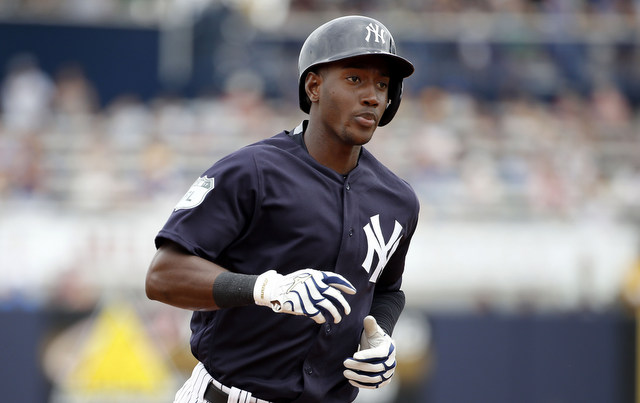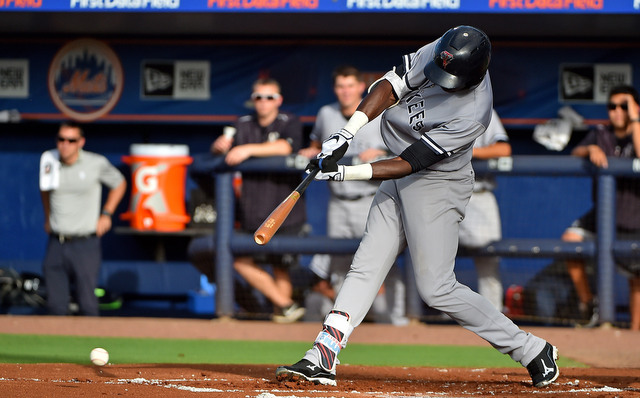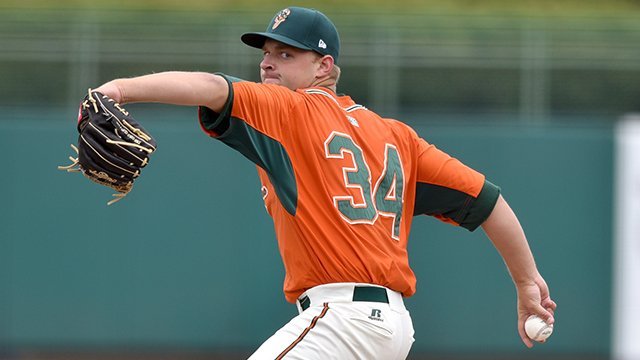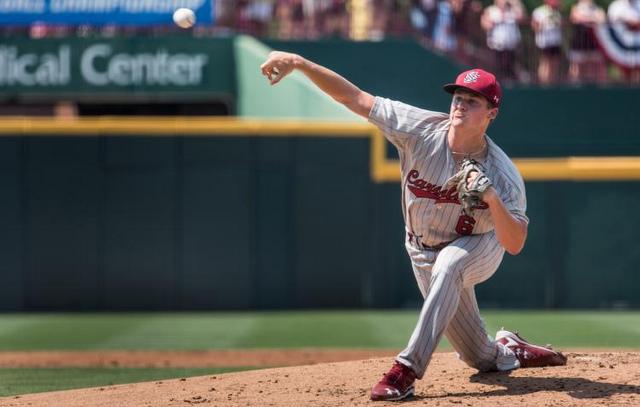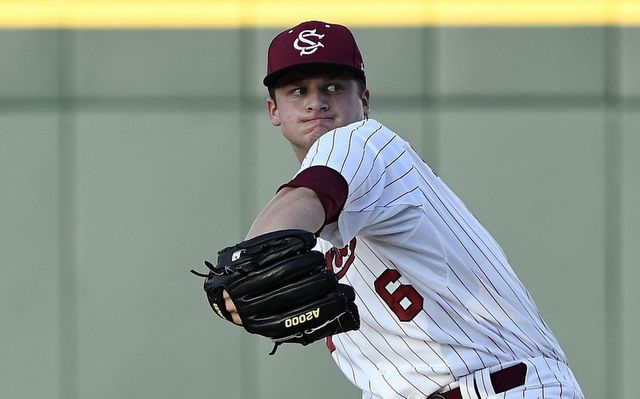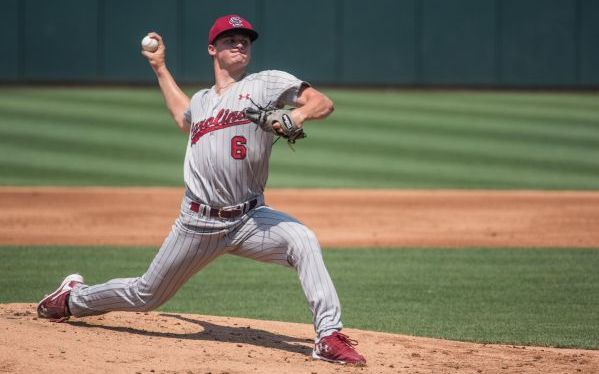- No word on today’s bullpen sessions, though Masahiro Tanaka is scheduled to throw live batting practice Sunday. That means he won’t get into a Grapefruit League game until sometime next week. [Marly Rivera]
- Neither Aaron Judge nor Giancarlo Stanton will play first base this spring. “I don’t think we want to mess too much with two elite level players and start moving them around too much,” said Aaron Boone. Tyler Austin, meanwhile, has a “real opportunity” to be Greg Bird’s backup at first base. [Bryan Hoch, Jack Curry]
- Miguel Andujar said he feels ready to be the starting third baseman, but added he knows he has to work on his defense. “Footwork and repetition,” he said. Here’s some video of Andujar taking ground balls today. “I was working on my consistency and my rhythm right now,” he added. [Brendan Kuty, Curry]
- Remember when Tyler Wade said he made some swing adjustments? He made them while working out with Albert Pujols over the winter. They use the same gym in California. Wade said Pujols helped him adjust his stance to avoid being jammed inside and the difference is “night and day.” [Meredith Marakovits, Hoch]
- And finally, righty Clarke Schmidt threw off a mound today for the first time since having Tommy John surgery last year. Here’s some video. The Yankees made Schmidt their first round pick last season and I ranked him as their 14th best prospect a few weeks ago.
This is the nightly open thread. The Devils are playing, there’s some college basketball on the schedule, and the Olympics are still going as well. Talk about those games or anything else here, as long as it’s not religion or politics.
